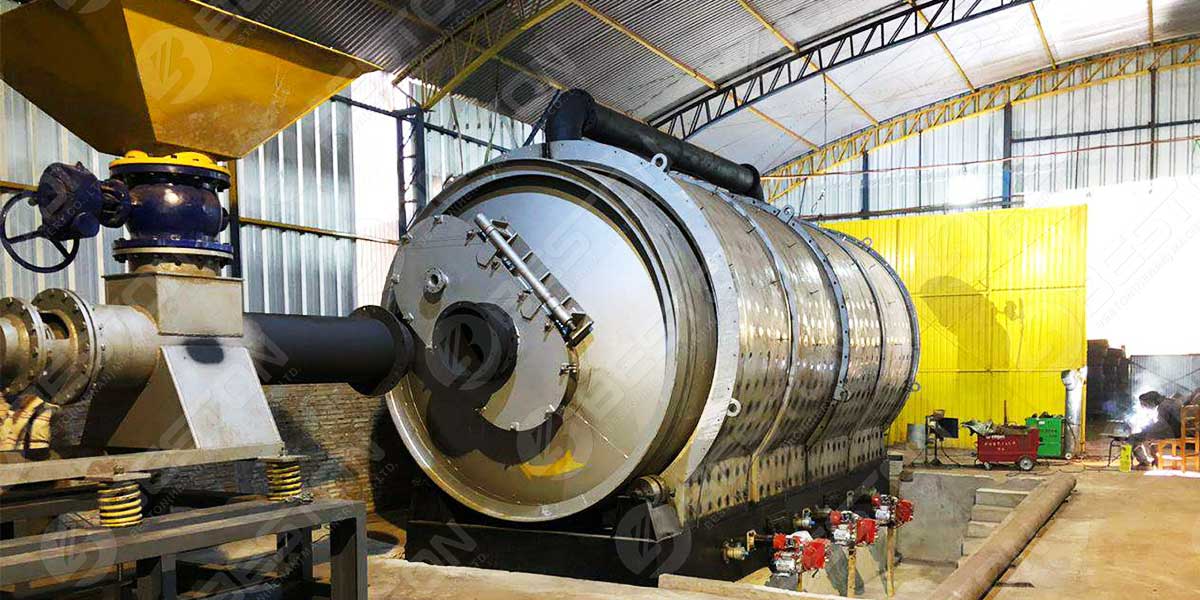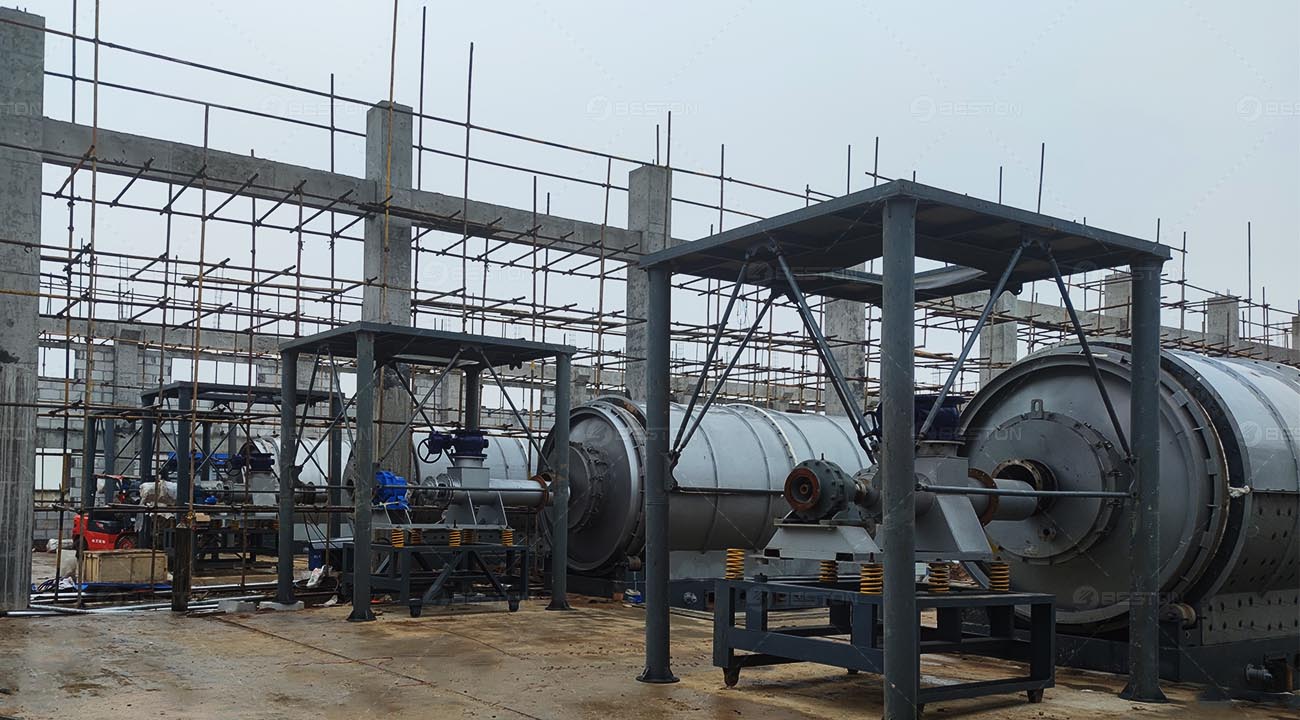Plastic pyrolysis, a cutting-edge recycling technology, holds significant importance in the global efforts towards sustainable waste management. By converting plastic waste into valuable products through a thermochemical process, a plastic pyrolysis plant presents an opportunity for both environmental conservation and economic growth. This article aims to guide aspiring entrepreneurs and environmentally conscious individuals through the process of setting up a plastic pyrolysis plant, highlighting its benefits and the steps involved.
Planning and Research
Identifying Suitable Location and Space Requirements
-
- Assessing the availability of suitable land or existing industrial sites
- Considering zoning regulations and proximity to waste sources and markets
- Determining the space requirements for plastic pyrolysis plant installation, storage, and processing units
Analyzing Market Demand and Potential Profitability
-
- Conducting market research to understand the demand for recycled plastic products
- Identifying potential customers, such as manufacturers or packaging companies
- Evaluating the profitability based on market dynamics, production costs, and pricing strategies
Understanding Regulatory and Legal Considerations
-
- Familiarizing yourself with local, regional, and national regulations governing waste management and recycling
- Obtaining necessary permits, licenses, and certifications
- Complying with safety standards and environmental regulations
Obtaining Necessary Equipment
Selecting Appropriate Pyrolysis Reactor Technology
-
- Exploring different types of pyrolysis reactors, such as batch, semi-continuous, or continuous pyrolysis plant
- Evaluating their efficiency, capacity, and compatibility with the desired end products
- Considering factors like energy consumption, maintenance requirements, and ease of operation
Procuring Essential Auxiliary Equipment
-
- Identifying and acquiring equipment for feedstock preprocessing, such as shredders or sorting systems
- Ensuring the availability of storage tanks, condensers, and distillation units
- Installing gas and liquid treatment systems to minimize environmental impact
Ensuring Safety Measures and Environmental Compliance
-
- Implementing proper safety protocols for handling flammable materials and potentially hazardous by-products
- Installing fire suppression systems, gas monitoring devices, and ventilation systems
- Adhering to environmental standards for air emissions, water discharge, and waste disposal

Setting up the Infrastructure
Preparing the Site for Installation
-
- Clearing and leveling the land, if required
- Constructing foundations for the pyrolysis reactor for sale and other equipment
- Installing utility connections, including electricity, water, and drainage systems
Establishing Power and Water Supply Connections
-
- Consulting with local utility providers to ensure sufficient electricity capacity
- Determining water requirements for cooling and process needs
- Establishing reliable connections and backup systems for uninterrupted operations
Constructing Storage and Processing Units
-
- Building storage facilities for plastic feedstock and end products
- Constructing processing units for waste sorting, shredding, and feedstock preparation
- Designing efficient material handling systems to streamline the production process
Operational Considerations
Securing a Consistent Supply of Plastic Feedstock
-
- Establishing partnerships with waste collection agencies, recycling centers, and industries generating plastic waste
- Developing contractual agreements for a steady supply of feedstock
- Ensuring the quality and composition of the plastic waste to optimize the pyrolysis process
Sorting and Preprocessing Plastic Waste
-
- Implementing effective sorting techniques, such as manual or automated systems
- Removing contaminants, such as metal or non-recyclable plastics
- Preprocessing the plastic waste through shredding or size reduction for better feedstock uniformity
Operating and Maintaining the Pyrolysis Plant Efficiently
-
- Training and educating the workforce on plant operations, safety procedures, and maintenance protocols
- Establishing routine maintenance schedules for equipment inspection, cleaning, and repair
- Monitoring process parameters, such as temperature, pressure, and residence time, to optimize production and product quality
Marketing and Selling the End Products
Identifying Target Markets and Potential Buyers
-
- Researching industries and sectors that use or demand recycled plastic products
- Building a network of potential buyers, including manufacturers, packaging companies, or construction firms
- Assessing market trends and customer preferences to tailor products accordingly
Developing Effective Marketing Strategies
-
- Creating a brand identity that emphasizes the environmental benefits of recycled plastic products
- Designing marketing materials, including brochures, websites, and social media campaigns
- Attending trade fairs, industry conferences, and networking events to showcase the products and establish business connections
Establishing Partnerships and Distribution Networks
-
- Collaborating with local recycling organizations, pyrolysis plant manufacturers. Beston Group might be a good choice.
- Exploring partnerships with distributors or logistics providers for efficient product transportation
- Evaluating the feasibility of export opportunities to expand the market reach
Ensuring Environmental Sustainability
Implementing Proper Waste Management Practices
-
- Establishing a waste management system to handle by-products, such as char or ash
- Exploring possibilities for further recycling or utilization of by-products
- Disposing of non-recyclable or hazardous materials through approved waste management channels
Monitoring Emissions and Controlling Pollution
-
- Installing emission monitoring systems to track air pollutants, such as volatile organic compounds or particulate matter
- Implementing gas cleaning technologies, such as scrubbers or filters, to minimize emissions
- Collaborating with environmental agencies for regular inspections and compliance with emission standards
Exploring Options for Product Utilization and Recycling
-
- Conducting research and development to explore innovative uses of the pyrolysis oil, gas, and char
- Partnering with research institutions or technology companies for product development and commercialization
- Promoting circular economy initiatives by encouraging the recycling or reusing of the end products
Conclusion
Setting up a plastic pyrolysis plant requires meticulous planning, research, and adherence to environmental regulations. By following the outlined steps, entrepreneurs and individuals can contribute to both waste reduction and resource conservation. A well-designed plastic pyrolysis plant not only offers economic benefits but also plays a crucial role in achieving a sustainable future by transforming plastic waste into valuable products. With determination and dedication, one can embark on this transformative journey and make a positive impact on the environment and the community.